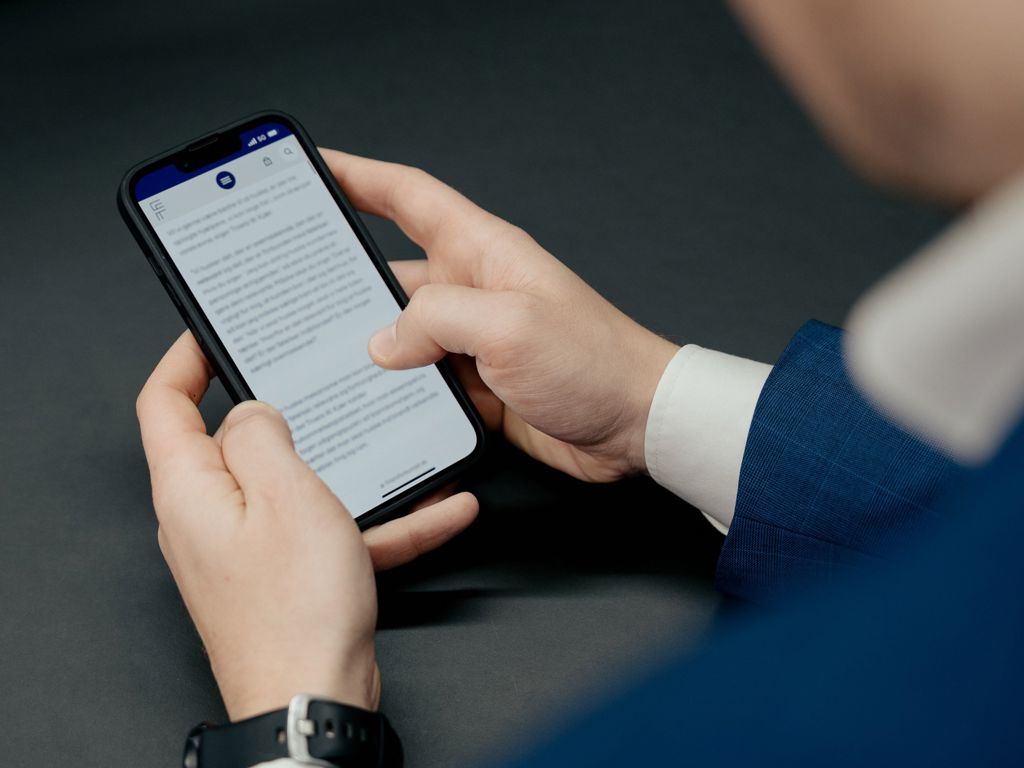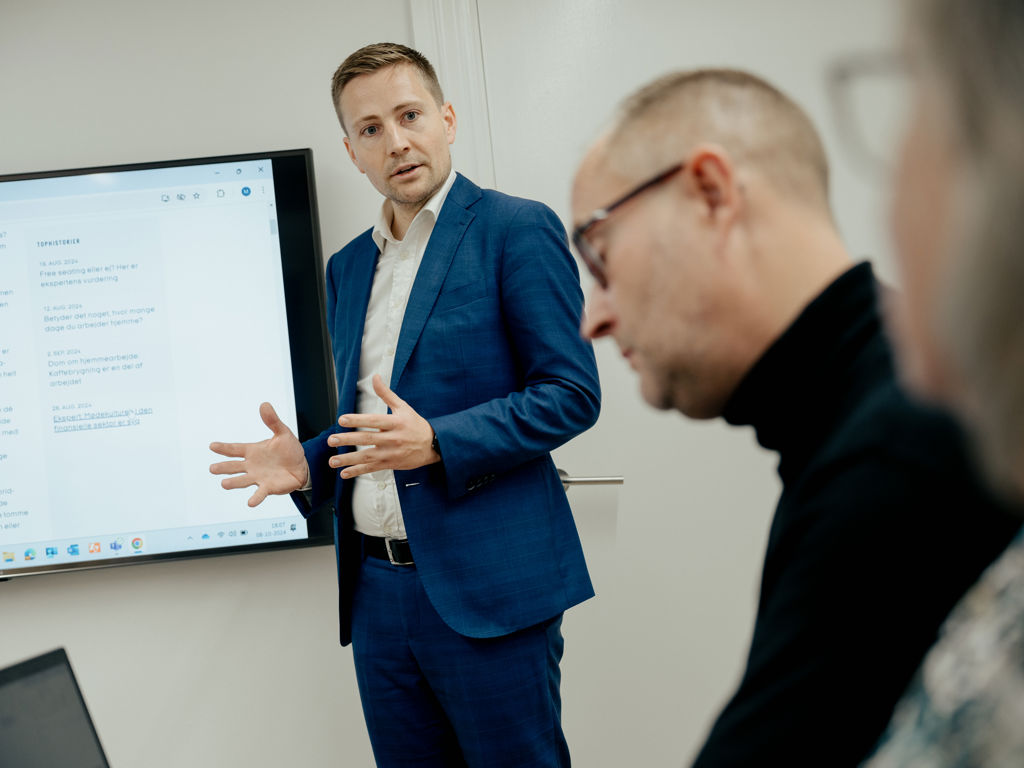Expert: Stress is never just a personal problem
If large workplaces are to solve the major stress problem, they must do something entirely different from what they usually do, says stress expert Malene Friis Andersen, offering a range of good advice.
When an employee is affected by stress, the solution is often for the employee to see a psychologist or follow an individual stress programme. But this solution is too simple for solving a problem that is typically complex.
The words come from psychologist and stress expert Malene Friis Andersen.
“Where we place the solution, is also where we indirectly place the cause. If the solution is within the employee, so is the cause,” she says to the newsletter Finans, adding that it is, of course, beneficial for the individual employee to receive personal support.
But it cannot be a stand-alone solution, says Malene Friis Andersen, explaining that we should look beyond this and view the organisation as a whole.
“If we don't turn our attention towards the workplace and the potential risk factors in our work environment that produce stress, we'll end up with a culture that points at the person instead. As a result, we lose sight of the relevant actions we can take in the workplace to prevent these incidents,” she highlights.

Marianne’s children not the cause of her stress
A well-being survey among more than 9,000 of Finansforbundet’s members shows that one in five financial sector employees are at risk of developing health-threatening stress.
Meanwhile, 72% of those who often or constantly feel stressed say that their stress is primarily work-related. This is precisely why it is an area that holds valuable insights if we are to eventually untangle the Gordian knot of stress, according to Malene Friis Andersen.
She basically means that we have to understand that there can be multiple causes of stress.
“It could very well be the case that Marianne has three children younger than 10 at home, which is stressful. There’s no denying that. But there might also be other factors at play. Perhaps she also has an increased workload that has accelerated in recent years. Perhaps some customers have become more critical, and perhaps there are more emotional demands in the job than before,” she lists.
In situations like these, workplaces need to take a curious approach instead of just reaching into the desk drawer for the psychologist’s card," says the stress expert.
Many types of cases in the financial sector have been automated, so employees are likely handling cases of a more complex nature. Meanwhile, regulation has changed so that the complexity of tasks has grown.
“In other words, you cannot simply count cases or customers and conclude that the employee’s workload hasn’t increased because the number of cases or customers is the same as it was five years ago. You need to adopt a more learning-oriented and curious approach to look at how the content of the tasks might have changed rather than just counting and measuring,” explains Malene Friis Andersen.
Time to break from an accepted norm
The well-being survey among Finansforbundet’s members reveals significant differences in stress levels across the individual companies within the same job function.
For example, as many as 36% of private consultants are at risk of health-threatening stress in a company, while the same applies to 14% of those employed in the best-scoring company.
It is a sign that companies must break from an accepted norm that many are conforming to according to Malene Friis Andersen.
“Many have a tendency of saying ‘that's how it's always been in our line of business’. Deadlines are always short, and the workload is heavy,” she says, noting that it is not only like that in struggling companies; companies doing well also have a ‘of course it’s like this’ mindset.
“It's not like there's something in the water to explain it. It’s because different organisations have different cultural ways of preventing and handling it well when it happens,” she says.
Pick the low-hanging fruit
She points to new surveys confirming that there are low-hanging fruits to pick if you have not already picked them.
“Why not consider the possibility of offering employees more flexibility or perhaps eliminate some of the individual performance goals that have been set," she says, pointing to the
well-being survey, which shows that those with the least stress and highest well-being have flexible working hours and between one and two work from home days.
The survey also shows that 30% of those whose performance is measured according to individual goals only often feel stressed. The same is true for only 16% of those whose performance is measured according to team or department goals only.
“Another low-hanging fruit is to see if they know locally how to deal with stress. Is the manager equipped for it?” Malene Friis Andersen asks rhetorically.
She points out that we do not always need to set big initiatives in motion to make a difference.
“At lot can be done at micro level in relation to creating a good mental working environment. My overall point is that we can do something at all levels,” she says.
Doing nothing is more expensive
For many, it might seem complicated to suddenly have to do something entirely different from what they are used to.
“All learning is challenging, and I certainly understand that it's more manageable for individual managers or companies to stick to their usual practices and refer employees affected by stress to a psychologist without doing much else," she says, noting that it takes courage, time and leeway if you want to take a more organisational approach to stress prevention.
And although it may seem expensive, doing nothing is actually more expensive, Malene Friis Andersen says.
“The greatest expense for companies is actually employees who go to work being stressed or suffering from similar problems,” she says, explaining that stress reduces working capacity – even in the period leading up to an employee handing in a stress-related sick leave note to their manager.
“These employees have a significantly lower productivity. They find it harder to concentrate, prioritise, manage time and to collaborate. In addition, they are at increased risk of taking absence due to illness,” she says.
When the companies Malene Friis Andersen assists ask if they will still achieve the same results as before after seriously focusing on employee well-being and the psychological work environment, she usually replies that she hopes not.
“I hope they will achieve different results – such as resolving problems early on, improving collaboration so employees are more inclined to stay with the company, which in turn creates better relationships with customers, and enhances our ability to retain them. Interestingly, employees also tend to learn better when they are in balance, so who knows what solutions they might come up with?" says Malene Friis Andersen.
Mental health and well-being
How do we protect our mental health and well-being when our work life is under constant change? And what learnings and initiatives should we make use of to ensure both fellowship and flexibility? Learn and be inspired here.
Read more





